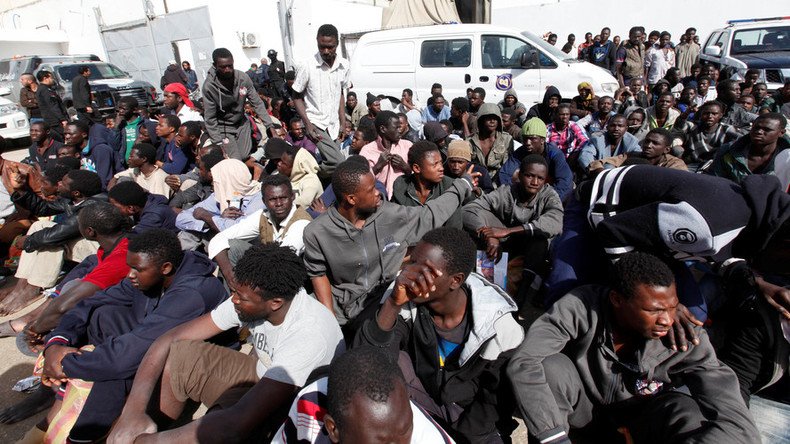22 migrants killed, 100 injured as smugglers battle for supremacy in Libya’s power vacuum

A total of 22 migrants have been killed and some 100 injured in fighting between rival smuggler gangs in Libya so far this year. This comes at a time when seaborne migration from Africa to Italy has risen by 50 percent so far in 2017.
"This is creating all kinds of activity in the smuggling industry, and apparently that activity has reached the level of violent shootouts that left 22 killed in the last couple of days," Joel Millman, a spokesman for the International Organization for Migration (IOM), the UN migration agency, said in a news briefing on Tuesday as reported Reuters.
“The dead were thought to be migrants rather than smugglers because they were sub-Saharan Africans,” he added. These deaths are in addition to the 140 dead bodies already found on Libyan beaches to date this year.
60% higher than last year: Mediterranean #migrant rescues reach 3yr high as Italy prepares for summer influx https://t.co/yCcQeAC8fA
— RT (@RT_com) March 6, 2017
On October 20, 2011, the former Libyan leader Muammar Gaddafi was captured and killed in his hometown of Sirte by the National Transitional Council (NTC), the UN-recognized representatives of Libya at the time, following the Libyan revolution.
With Gaddafi gone, a power vacuum developed, and Libya quickly split into two with the Tobruk-based parliament and the unity government (NTC) in Tripoli vying for control.
To further complicate matters, various militant groups, including the Islamic State (IS, former ISIS/ISIL), began carving out their own fiefdoms in violent power plays across the war-torn countryside.
Since then, Libya has become the focal point for migrant crossing from Africa to Europe via Italy. In 2016, there were over 181,000 illegal border crossings on the Central Mediterranean route, Libya to Italy, according to Frontex, the EU’s border control agency.
6 years since start of #ArabSpring:
— RT (@RT_com) February 17, 2017
- #Libya in chaos
- no signs of democracyhttps://t.co/kgtqJA4seipic.twitter.com/1GXGpWEOB1
There are concerns that Libya will remain permanently fractured as a result of tribal conflicts between the almost 2,000 militias and armed groups operating in the country.
The US State Department lists Libya as both a transit and a destination country for human trafficking, with child soldiers, prostitution and forced labor common among the warring factions within the troubled state.
Italian Interior Minister Marco Minniti recently met with city mayors from 10 towns in Libya’s southern desert to try and persuade them to join together to prevent human trafficking through Libyan territory into Europe.












